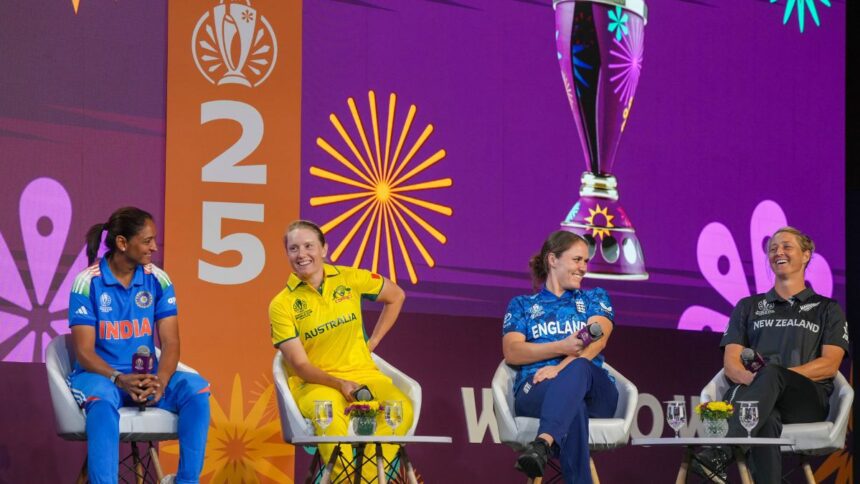New Delhi: The 2011 ODI World Cup victory by India’s men’s cricket team marked a pivotal moment in the nation’s cricketing history, significantly altering its landscape. While the 1983 World Cup, Jagmohan Dalmiya’s presidency at the BCCI, and Sachin Tendulkar’s immense influence contributed to the sport’s growth, the 2011 win led by MS Dhoni stands uniquely influential.
The triumph fundamentally transformed India’s approach to cricket, leading to the establishment of a multi-billion-dollar industry. This success occurred just three years after the Indian Premier League (IPL) was launched in 2008, and the synergy between the IPL’s rise and the World Cup win fostered an unprecedented cricketing revolution in India.
The 2011 victory garnered immense national pride and spurred a wave of cricket enthusiasm across the country. The IPL had nurtured new talent that brought fresh energy and tactical innovation to the national team. Post-2011, the cricket industry in India saw skyrocketing investments not only within the IPL but also at grassroots and domestic levels. Viewership soared, sponsorship increased, and cricket became further ingrained in the nation’s cultural identity. Furthermore, the win helped to bolster India’s influence in global cricket and instilled the belief that Indian teams could assert their dominance on the world stage.
Before 2011, Australia was the dominant force in world cricket, but India’s World Cup success signaled a shift in power dynamics. The BCCI ascended as the leading cricket board globally, playing a crucial role in developing international cricket, including robust support for Afghanistan as it was building its own cricketing framework.
The dawn of a new era awaits. The recent introduction of the Women’s Premier League (WPL) in 2023 mirrors the foundational journey of the IPL. The WPL offers female cricketers a platform for professional growth, skill enhancement, and financial benefits, laying the groundwork for elevating Indian women’s cricket to elite levels. With India set to host the ICC Women’s World Cup in 2025, just two years post-WPL launch, the stage is prepared for another momentous event. A home World Cup victory could ignite a transformative era in women’s sports similar to the 2011 milestone for men’s cricket.
Potential impact of a 2025 win: Securing the Women’s World Cup on home soil could dramatically reshape sports culture in India. As the 2011 men’s victory inspired countless boys to pursue cricket, a women’s triumph could encourage millions of girls to engage with the sport. This landmark achievement would challenge entrenched gender barriers and promote broader female participation at all levels.
Such success would likely attract increased investment from both the government and private sectors, resulting in enhanced training facilities, specialized academies, and greater competitive opportunities for women starting from grassroots levels. Strengthened infrastructure is vital for sustaining the growth of women’s cricket and nurturing future talents.
Beyond cricket, a World Cup victory would elevate the profile of women’s sports overall in India. It could encourage greater media attention and attract new sponsorship deals, stimulating the creation and growth of professional leagues across various sports. This augmented visibility would contribute to improving the standing of women athletes nationwide.
Moreover, amidst cultural norms that often restrict women’s involvement in sports, winning the World Cup could catalyze social change, empowering women and girls from diverse backgrounds to challenge societal conventions and encourage a more supportive atmosphere for female athletes throughout India.
Parallels and possibilities: The rise of the IPL and the 2011 World Cup win dramatically shifted the narrative for men’s cricket; similarly, the combination of the WPL and a victorious 2025 World Cup could transform women’s cricket. This scenario could establish a positive feedback loop, nurturing talent, enhancing performances, and fostering greater fan engagement.
Realistic prospects: As the 2025 Women’s ODI World Cup approaches, India emerges as a formidable contender, buoyed by momentum from the WPL and recent performances. With seasoned players like Smriti Mandhana and Harmanpreet Kaur leading the batting lineup, complemented by a strong bowling contingent featuring Deepti Sharma and Renuka Singh, India boasts both depth and skill.
The benefits of hosting the tournament include familiar playing conditions and enthusiastic home support, which would further bolster the team’s confidence. Despite facing challenges from powerhouse teams like Australia and England, India’s growing consistency and aggressive style establish them as serious contenders. Maintaining fitness and mental resilience will be paramount to replicating the men’s 2011 triumph and potentially achieving a significant breakthrough in women’s cricket.










